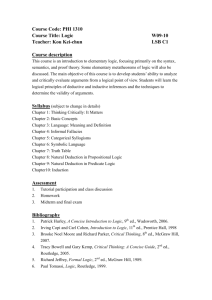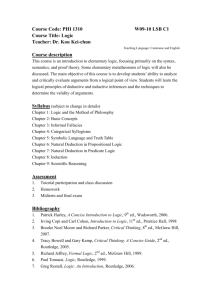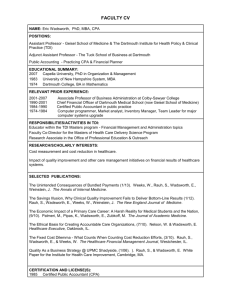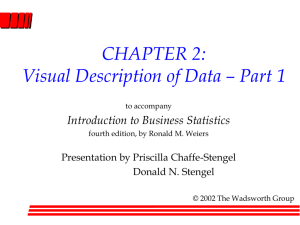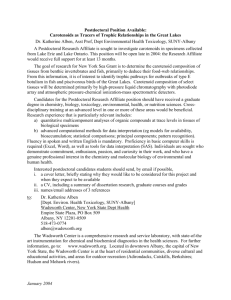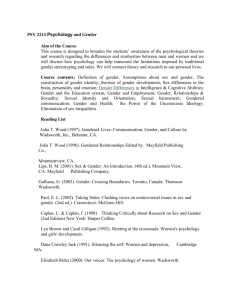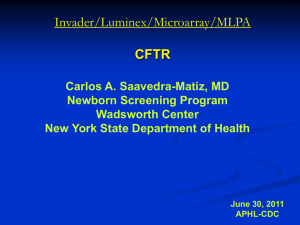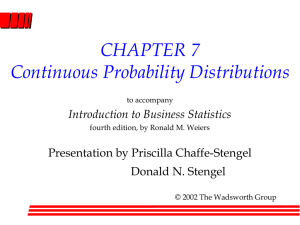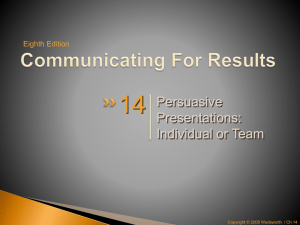Probability and Samples: The Distribution of Sample Means
advertisement
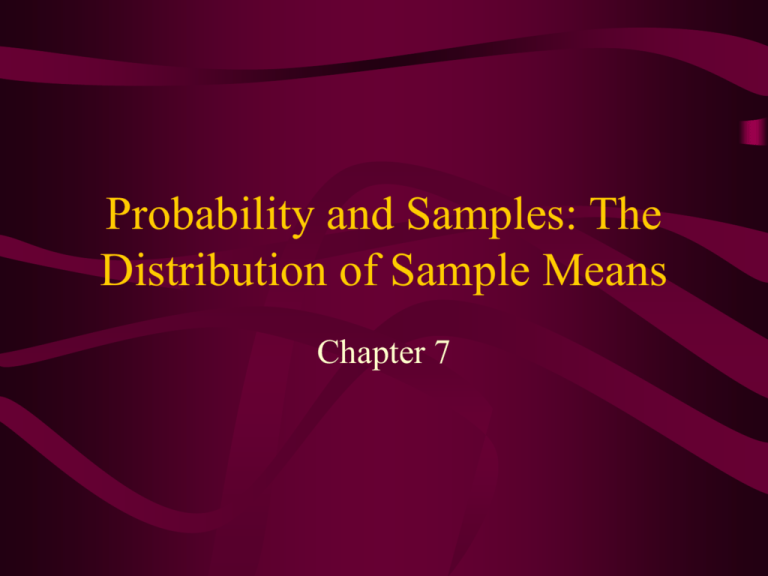
Probability and Samples: The Distribution of Sample Means Chapter 7 Chapter Overview • Samples and Sampling Error • The Distribution of Sample Means • Probability and the Distribution of Sample Means • Computations Q? What is the purpose of obtaining a sample? A. To provide a description of a population What happens when the sample mean differs from population mean? • Sampling Error: The discrepancy, or amount of error, between a sample statistic and its corresponding population parameter. • 2 separate samples from the same population will probably differ. – different individual – different scores – different sample means Predicting the characteristics of a sample • Distribution of Sample Means: the collection of sample means for all the possible random samples of a particular size (n) that can be obtained from a population • Distribution of sample means are statistics, not single scores. • Sampling distribution: a distribution of statistics obtained by selecting all the possible samples of a specific size from a population. Copyright © 2002 Wadsworth Group. Wadsworth is an imprint of the Wadsworth Group, a division of Thomson Learning Example 7.1 Figure 7.1 Frequency distribution for a population of four scores: 2, 4, 6, 8 Let’s construct a distribution of sample means • What do we need to know – Population parameters (scores) • 2,4,6,8 – Specify an (n) – Examine all possible samples Copyright © 2002 Wadsworth Group. Wadsworth is an imprint of the Wadsworth Group, a division of Thomson Learning Table 7.1 The possible samples of n = 2 scores from the population in Figure 7.1 Copyright © 2002 Wadsworth Group. Wadsworth is an imprint of the Wadsworth Group, a division of Thomson Learning Figure 7.2 Figure 7.2 The distribution of sample means for n = 2 Characteristics of sample means • Sample means tend to pile up around the population mean • The distribution of sample means is approximately normal in shape. • The distribution of sample means can be used to answer probability questions about sample means What do we use when we have a large n and do not want to calculate all of the possible samples ? Central Limit Theorem • CLT: For any population with mean of and a standard deviation , the distribution of sample means for sample size n will approach a normal distribution with a mean of and a standard deviation of /n (square root of n) as n approaches infinity. n n CLT: Facts • Describes the distribution of two sample of sample means for any population, no matter what shape, mean, or standard deviation. • The distribution of sample means “approaches” a normal distribution by the time the size reaches n= 30. Central Limit Theorem Cont’d • Distribution of sample means tends to be a normal distribution particularly if one of the following is true: – The population from which the sample is drawn is normal. – The number of scores (n) in each sample is relatively large (n>30) Expected value of X • Sample means should be close to the population mean aka the expected value of x • Expected value of X: the mean of the distribution of sample means will be equal to (the population mean) X Standard Error of X • Notation: x = standard distance between x and • The standard deviation of the distribution of sample means. • Measures the standard amount of difference one should expect between X and simply due to chance Magnitude of the Standard error is determined by • The size of the sample • The standard deviation of the population from which the sample is selected • Law of large numbers: the > n, the more probable the sample mean will be close to the population mean. Learning Check pg 151 1) A population of scores is normal with =80 and =20 a) Describe the distribution of sample means for samples of size n=16 selected from this population. (Describe shape, central tendency, and variability, for the distribution) b) How would the distribution of sample means be changed if the sample size were n=100 instead of n=16. • 2) As sample size increases, the value of the standard error also increases? (True or False) • 3)Under what circumstances will the distribution of sample means be a normal shaped distribution? Learning Check 7.2 pg 152 • • SAT scores with a normal distribution with a =500 and =100 In a random sample of n=25 students, what is the probability that the sample mean would be greater than 540? Copyright © 2002 Wadsworth Group. Wadsworth is an imprint of the Wadsworth Group, a division of Thomson Learning Figure 7.3 A distribution of sample means Z-scores for Sample Means • Z-scores describe the position of any specific sample w/in the distribution • The z-score for each distribution can be calculated using: z=X- x General Concepts • Standard error: samples will not provide perfectly accurate representations of the population • Standard error provides a method for defining and and measuring sampling error. Copyright © 2002 Wadsworth Group. Wadsworth is an imprint of the Wadsworth Group, a division of Thomson Learning Figure 7.6 The structure of research study Copyright © 2002 Wadsworth Group. Wadsworth is an imprint of the Wadsworth Group, a division of Thomson Learning Figure 7.8 Showing standard error in a graph
